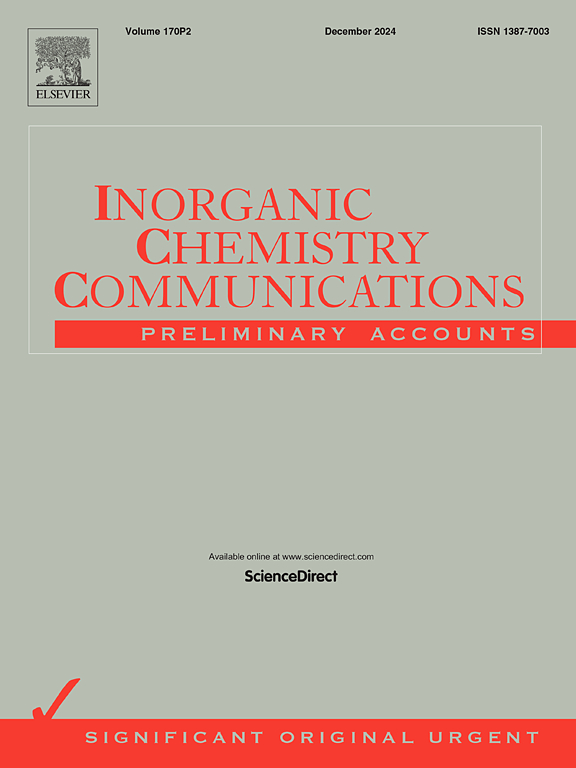NiCu alloy nanoparticles encapsulated in nitrogen-doped carbon nanotubes for highly efficient acidic hydrogen evolution reaction
IF 5.4
3区 化学
Q1 CHEMISTRY, INORGANIC & NUCLEAR
引用次数: 0
Abstract
The use of low-cost non-precious metals to replace platinum as electrocatalysts for the hydrogen evolution reaction (HER) holds great potential, but their efficiency and stability still face challenges. Here, we report a nitrogen-doped carbon nanotube (NCNT) supported NiCu-x (x = 0.5, 1, 2) electrocatalyst for the hydrogen evolution reaction (HER) under acidic conditions. By optimizing the atomic molar ratio of Ni/Cu alloy nanoparticles, the optimal NiCu-1 catalyst was obtained, featuring a thin carbon shell and uniformly distributed alloy nanoparticles, and exhibiting outstanding HER activity. The NiCu-1 catalyst requires only 42 mV overpotential to achieve a current density of 10 mA/cm2. Its high electrochemical active surface area and low electron transfer resistance contribute to enhanced HER catalytic performance. Furthermore, the 40 h current density stability test demonstrates excellent durability of the catalyst. DFT calculations indicate that the optimized bimetallic composition and structure significantly enhance the electron transfer rate. The approach proposed in this work provides a new strategy for developing efficient, stable, and cost-effective materials for sustainable energy conversion systems.

氮掺杂碳纳米管包裹镍钴合金纳米颗粒进行高效酸性析氢反应
利用低成本的非贵金属代替铂作为析氢反应的电催化剂具有很大的潜力,但其效率和稳定性仍面临挑战。在这里,我们报道了一种氮掺杂碳纳米管(NCNT)负载的NiCu-x (x = 0.5, 1,2)电催化剂在酸性条件下用于析氢反应(HER)。通过优化Ni/Cu合金纳米粒子的原子摩尔比,得到了最优的NiCu-1催化剂,其碳壳薄,合金纳米粒子分布均匀,具有优异的HER活性。NiCu-1催化剂只需要42 mV过电位就能达到10 mA/cm2的电流密度。其高的电化学活性表面积和低的电子转移阻力有助于提高HER催化性能。此外,40 h电流密度稳定性测试表明催化剂具有良好的耐久性。DFT计算表明,优化后的双金属成分和结构显著提高了电子传递速率。本文提出的方法为开发高效、稳定、经济的可持续能源转换系统材料提供了新的策略。
本文章由计算机程序翻译,如有差异,请以英文原文为准。
求助全文
约1分钟内获得全文
求助全文
来源期刊

Inorganic Chemistry Communications
化学-无机化学与核化学
CiteScore
5.50
自引率
7.90%
发文量
1013
审稿时长
53 days
期刊介绍:
Launched in January 1998, Inorganic Chemistry Communications is an international journal dedicated to the rapid publication of short communications in the major areas of inorganic, organometallic and supramolecular chemistry. Topics include synthetic and reaction chemistry, kinetics and mechanisms of reactions, bioinorganic chemistry, photochemistry and the use of metal and organometallic compounds in stoichiometric and catalytic synthesis or organic compounds.
 求助内容:
求助内容: 应助结果提醒方式:
应助结果提醒方式:


